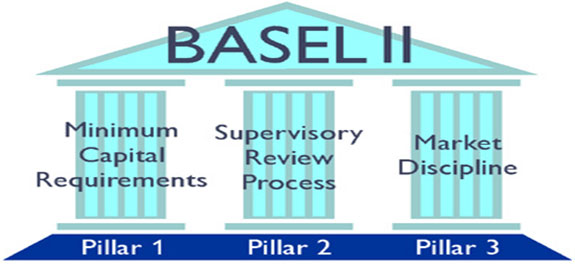Start Date:
24 March, 2025.
End Date:
28 March, 2025.
The Basel Committee on Banking Supervision consists of senior representatives of bank supervisory authorities and central banks from Argentina, Australia, Belgium, Brazil, Canada, China, France, Germany, Hong Kong SAR, India, Indonesia, Italy, Japan, Korea, Luxembourg, Mexico, the Netherlands, Russia, Saudi Arabia, Singapore, South Africa, Spain, Sweden, Switzerland, Turkey, the United Kingdom and the United States.
It usually meets at the Bank for International Settlements (BIS) in Basel, Switzerland, where its permanent Secretariat is located.
The committee carried out some reforms after the Basel II Accord, with the objective of the reforming and improving the banking sector’s ability to absorb shocks arising from financial and economic stress, whatever the source, thus reducing the risk of spillover from the financial sector to the real economy.
This committee sets out the rules text and timelines to implement the Basel III framework. Through its reform package, the Committee also aims to improve risk management and governance as well as strengthen banks’ transparency and disclosures in what is known as the Pillar I, Pillar II and Pillar III of the Basel III Framework.
This 5 days course has therefore been designed to avail providers of banking services, local banking institutions and other financial institutions of the details of this reform and how to carry out its implementations as well as fulfilling the compliance regime contained in the reform
Learning Objectives
At the end of this training session, participants will be able to:
- Define banking regulation, describe the primary objectives of banking regulation, and list the key global regulators in the banking industry.
- Calculate the levels of regulatory capital a bank holds and determine if this exceeds the minimum amounts set out under Basel III.
- Familiarize yourselves with the relevant risks under the Basel III Regulation and how to manage such risks
- Identify the liquidity and leverage requirements of Basel III and determine if banks are above their specified minimum levels.
- Familiarize yourselves with other impactful regulatory frameworks that affect today’s banking industry.
Course Outline
Day 1
Introduction
- Strengthening the global capital framework
- Raising the quality, consistency and transparency of the capital base
- Enhancing risk coverage
- Supplementing the risk-based capital requirement with a leverage ratio
- Reducing pro-cyclicality and promoting countercyclical buffers
- Cyclicality of the minimum requirement
- Forward looking provisioning
- Capital conservation
- Excess credit growth
- Addressing systemic risk and interconnectedness
Day 2
Introducing a global liquidity standard
- Liquidity Coverage Ratio
- Net Stable Funding Ratio
- Monitoring tools
Transitional arrangements
- Scope of application
- Part 1: Minimum capital requirements and buffers
- Definition of capital
- Components of capital
- Elements of capital
- Limits and minima
- Detailed proposal
Day 3
- Common Equity Tier 1
- Additional Tier 1 capital
- Tier 2 capital
- Minority interest (ie non-controlling interest) and other capital issued out of consolidated subsidiaries that is held by third parties
- Regulatory adjustments
- Disclosure requirements
- Transitional arrangements
- Risk Coverage
- Counterparty credit risk
- Revised metric to better address counterparty credit risk, credit valuation adjustments and wrong-way risk
- Asset value correlation multiplier for large financial institutions
- Collateralized counterparties and margin period of risk
Day 4
- Central counterparties
- Enhanced counterparty credit risk management requirements
- Addressing reliance on external credit ratings and minimizing cliff effects
- Standardized inferred rating treatment for long-term exposures
- Incentive to avoid getting exposures rated
- Incorporation of IOSCO’s Code of Conduct Fundamentals for Credit Rating
- Agencies
- “Cliff effects” arising from guarantees and credit derivatives - Credit risk mitigation (CRM)
- Unsolicited ratings and recognition of ECAIs
- Capital conservation buffer
- Capital conservation best practice
- The framework
- Transitional arrangements
Day 5
- Countercyclical buffer
- Introduction
- National countercyclical buffer requirements
- Bank specific countercyclical buffer
- Extension of the capital conservation buffer
- Frequency of calculation and disclosure
- Transitional arrangements
- Leverage ratio
- Rationale and objective
- Definition and calculation of the leverage ratio
- Capital measure
- Exposure measure
- Transitional arrangements








